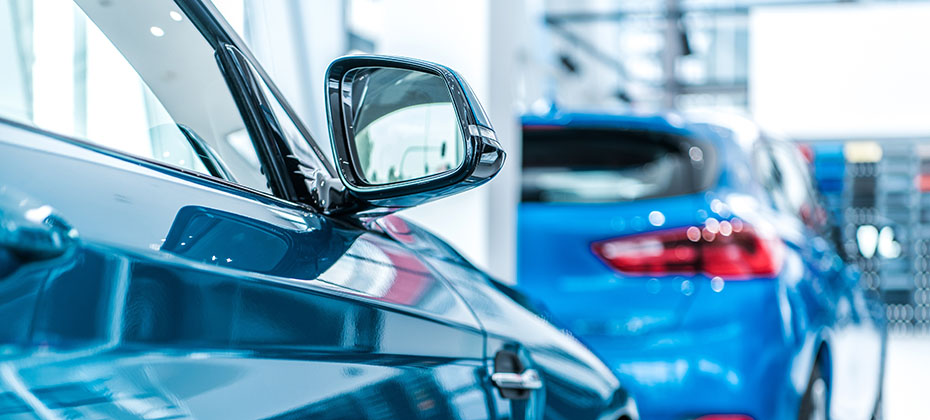Tag: automotive market

Experian’s Q1 2021 Automotive Market Trends Review revealed that some of the once-consistent new registration generational trends have reversed.

Experian Automotive Market Insights helps dealers efficiently identify potential conquest opportunities in their region and beyond.

Staying ahead of the trends and adjusting will support sales growth, while also supporting consumers as they begin to recover from the impact of COVID-19.

Pickups are the most common vehicle in operation at 20% share today and hold 16.5% of new vehicle registrations in the market in Q1 2019.

Beginning with the birth of stock muscle cars, like the Pontiac GTO, vehicles with powerful V8 engines permeated the roads in the 1960s. Given consumers’ “need for speed,” these vehicles were synonymous with American culture following World War II - some going as far as to call muscle cars as American as apple pie. It’s no doubt that these vehicles have made an undeniable lasting impression on the automotive industry. Today, there are still automotive enthusiasts who appreciate the style and strength of the muscle car, but most of us want practical vehicles with better fuel economy and easy maintenance. This has resulted in a dramatic increase in the volume of 4-cylinder vehicles on the road. As seen in the graphic above, over the last 11 years, 4-cylinder engines have increased in volume over 55%, 6-cylinder have declined 4% and 8-cylinders have increased 9.8%. More power, smaller engines This trend doesn’t necessarily mean that those of us who elect for a smaller engine size aren’t able to satisfy our need for speed. Horsepower has received a significant boost over the past two decades. This has been partially driven by EPA guidelines, as manufacturers have implemented engine enhancements to increase gas mileage to meet the guidelines, resulting in higher horsepower. 4-cylinder engines have as much horsepower today as 6-cylinder engines had in 2003. That gives today’s drivers a lot more pep in engine performance. Similarly, today's 6-cylinder engines have nearly the same horsepower today that V8s had in 2009. Where does that leave true muscle car enthusiasts? Well, if you are looking for raw power, things are looking up. In 2018, V8 engines averaged a whopping 370.4 horsepower, nearly double V8 output of 204 horsepower in 1999. Those who buy V8s today have power to burn. Above chart detailing percentage of total volume count and average vehicle MAX HP over history. The automotive market is driven by consumer preferences and offers a range of engine options, which provides something for everyone. The boost in horesepower in today’s engines provides a nice mix of fuel economy and performance. While muscle cars remain an important fixture in American society and automotive culture, demand has shifted and understanding these data points in the broader industry context empowers dealers to make the right inventory decisions. To learn more about the latest automotive trends impacting the marketplace, view the full Q4 2018 Automotive Market Trends Analysis.

When it comes to new vehicle registration, there is one segment that stands out from the pack: crossover vehicles. According to Experian’s Q4 2018 Automotive Market Trends Analysis, over the last four years, crossovers (CUVs) have spiked in popularity, representing about a third of new vehicle registrations in 2014 (34.1 percent), but growing to nearly half the new vehicle market in 2018 (47.6 percent). In fact, the large growth in CUVs isn’t limited to just the last four years – there was a large volume of growth year-over-year compared to 2017; the share has grown nearly 4 percent. Sedans and hatchbacks, meanwhile, have seen their share decrease year-over-year. The charts below detail this change in market, based on Experian’s latest 2018 quarterly findings. Source: Experian Automotive VIO as of December 31, 2018 (light duty registered vehicles only) What’s driving this growth? Across the board, the number of light-duty vehicles on the road continues to increase, up to 275.3 million in the U.S. market, at the end of 2018, compared to 271.4 million a year prior. The growth in CUVs isn’t entirely unprecedented, as it’s been going on for a number of years. CUVs continue to grow in popularity for a variety of reasons including: Greater visibility, as the driver sits higher than in a sedan/coupe Larger storage capacities for passengers or cargo Number of varieties available, such as size, engines, and manufactures Higher fuel efficiency than a full-size SUV or minivan Currently, there are over 130 different CUV/SUV Make/Model combos offered, and of those, the different engines, options, etc. drive that volume even higher. Source: Experian Automotive VIO as of December 31, 2018 (light duty registered vehicles only) Potential for growth Currently, there are only two CUVs among the top vehicles in the aftermarket “sweet spot.” Vehicles in the sweet spot are 6 to 12 model years old, and typically aged out of general OEM warranties for any repairs. These vehicles likely require more part replacement services, which may be performed by aftermarket service shops using parts from aftermarket part manufacturers. According to Experian data, the sweet spot has stopped falling and has settled for now. But, there is expected growth of the number of vehicles that fall into the sweet spot over the coming years. One of the segments where the aftermarket industry can begin to focus on will be CUVs. Source: Experian Automotive VIO as of December 31, 2018 (light duty registered vehicles only) The aftermarket can use this data to make more informed product decisions, specifically, around the high volume of CUVs expected to come into the sweet spot. With the number of vehicle options available on the market today, CUVs will continue to stand out as a segment to watch within the auto industry. There’s a greater story beyond the numbers and understanding how to leverage the data at hand can provide the industry with a greater understanding of CUVs and its potential for even greater growth. To learn more about CUVs/SUVs and total vehicles in operation, view the full Q4 2018 Automotive Market Trends Analysis.

With interest rates at their lowest level since 2008 and an increasingly competitive market, automotive lenders are increasing their willingness to make loans between six and seven years long: Auto loans of 73 to 84 months accounted for 14.1 percent of all new vehicle loans, up 47 percent from Q4 2010 Auto loans of 73 to 84 months accounted for 9.04 percent of all used vehicle loans, up 41 percent from Q4 2010 View our recent Webinar on the Q4 2011 state of the automotive market. Source: Experian Automotive's quarterly credit trend analysis. Download the quarterly studies and white paper.

Lenders are increasing loans to credit-challenged customers. According to Experian's quarterly automotive credit analysis, 21.87 percent of all new vehicle loans went to customers in the nonprime, subprime and deep-subprime categories. The largest percentage increases were in the two highest-risk segments: deep subprime, which jumped 17.3 percent, and subprime, which jumped 17.8 percent. Nonprime loan share increased 12.5 percent. View our recent Webinar on the state of the automotive market. Source: Experian Automotive's quarterly credit trend analysis. Download the quarterly studies and white papers.